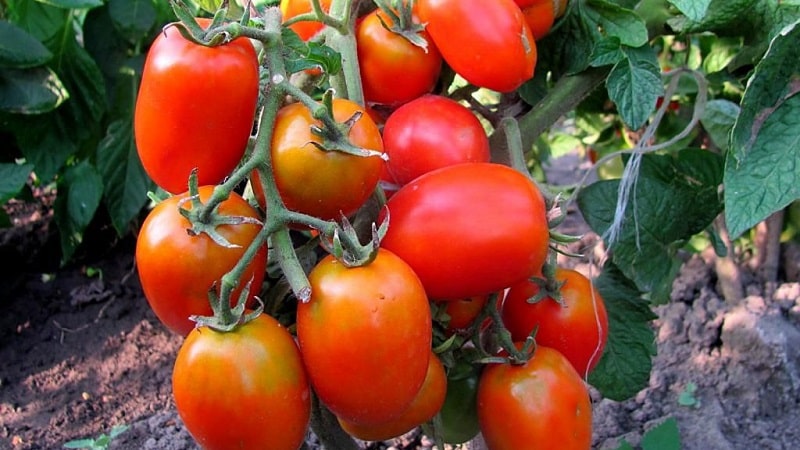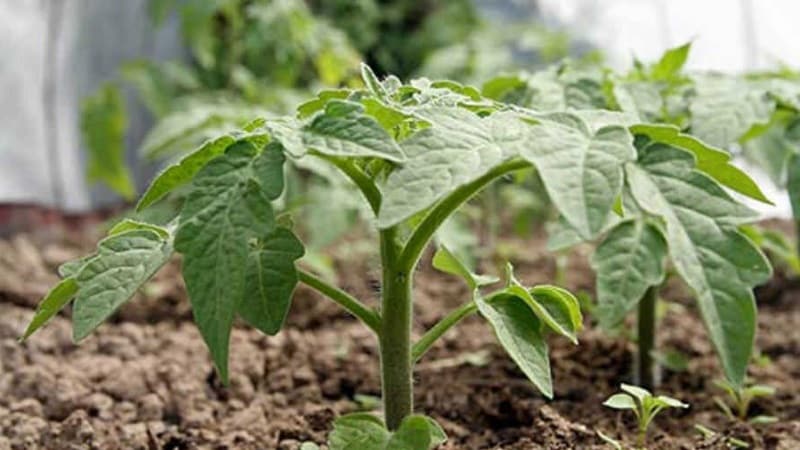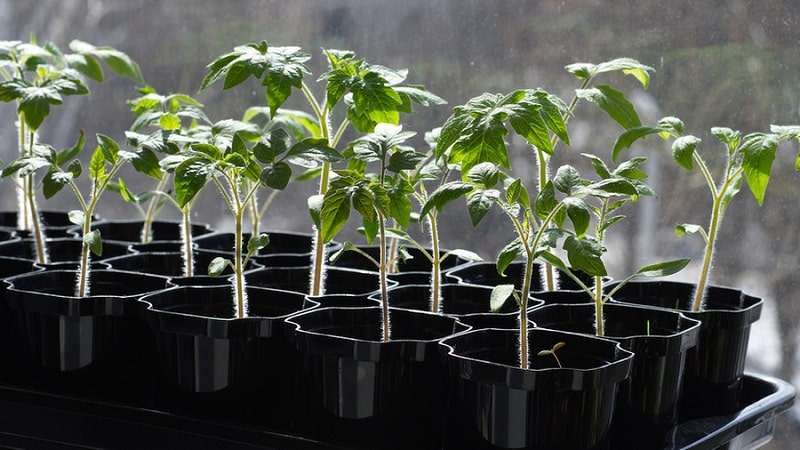We get the maximum yield with minimal effort - the Lazy Miracle tomato
Growing tomatoes is a task that requires constant attention and effort. Tomato Miracle of the Lazy is a real salvation for lazy people and lazy women, as well as those who want to get a good harvest with minimal skills and costs. What kind of variety is it, what are its main advantages and how to grow Lazy Miracle tomatoes on your own plot - read our article.
Description of the variety
Tomatoes were selected by specialists from the Siberian Research Institute of Plant Growing and Breeding especially for farms and dachas in the cold regions of the Russian north.
The variety is part of the “Ural Summer Resident” seed series – plants of this series are distinguished by strong immunity, resistance to sudden temperature changes, fungal diseases, and harsh climates. Even in conditions unfavorable for other varieties, the Miracle of the Lazy Man produces a good harvest.

Distinctive features
Early, high-yielding variety. The bushes are strong, 45 centimeters high, determinate type, medium leafy. The plants do not shoot, tie up or shape, which is why the variety is loved by Ural summer residents.
Besides, tomatoes are resistant to weather vagaries: cold, drought. Growing tomatoes in the southern regions is difficult - at an air temperature of +33 degrees, the formation of the ovary stops.
Fruit characteristics, yield
In the photo above you can see that Lazy Miracle tomatoes are plum-shaped. The average weight of one fruit is 60-65 g.
Other characteristics:
- bright red, smooth fruits with a strong tomato aroma;
- dense, fleshy, with a small number of seeds;
- the taste is sweet, with a slight sourness and pepper;
- The thick peel allows the fruit to be stored for a long time and is easy to transport.
The fruits ripen on the bush 85-95 days after emergence. The yield of one bush is 8 kg.
For reference. The fruits grow in a uniform size and shape, which is why this variety is often grown for sale.
How to grow seedlings
The time for planting seeds for seedlings is calculated based on the time of planting in the beds - 60 days. In the Urals and Siberia, tomatoes are planted in open ground in June, and in greenhouses in May. In central Russia - a month earlier.

Seed preparation
To begin with, select good seeds - large, even, not empty to the touch.. The rest are thrown away. The selected grains are placed in a salt solution (one tablespoon of salt is dissolved in a glass of water). After 15-20 minutes, the glass is checked: the floating grains are removed, and those that sank to the bottom are used for planting.
After the seeds are warmed up, placed in a cotton cloth on central heating radiator. The procedure lasts 36-48 hours.
The next stage of seed preparation is disinfection. The grains are placed in a 1% solution of potassium permanganate for 15-20 minutes. After this time, the seeds are washed with warm running water.
Important! Many gardeners argue about the need to disinfect planting material. Some believe that this procedure has already been carried out at the manufacturer, while others note that it is better to do it yourself. In any case, remember that a solution of potassium permanganate will not save you from infections contained inside the seed.
Seeds are saturated with oxygen. Scientifically, this procedure is called bubbling. The grains are placed in water heated to +26 - +30 degrees and stirred every hour for 15-18 hours. After this time or as soon as embryos appear on the seeds, bubbling is stopped.
Sprouted seeds are set aside - they are ready for planting, and the rest are soaked in water or biostimulating preparations. The products “Zircon”, “Epin”, “Immunocytophyte” have proven themselves well.
Afterwards the seeds are hardened: wrapped in cotton cloth and a bag, placed in a cool place with a temperature of +3 to -2 degrees. A refrigerator, balcony or summer veranda are suitable for this. After 8 hours, the seeds are removed for 8 hours. The procedure is repeated 5-6 times.
Important! The procedure is dangerous because the planting material can easily be damaged if it is not hardened correctly. Therefore, novice gardeners are advised not to harden all the seeds.
Before planting, the seeds are germinated: the grains are placed on damp gauze or a piece of cotton fabric, laid out on a flat surface (saucers, lids or a Petri dish are suitable for this) and left until embryos of 2-3 mm in size appear. Make sure that the air temperature does not fall below +25 degrees, and that the fabric is always damp.
Container and soil
Plastic containers (both special and food containers), cut bottles, and cake packaging are used as pots.. The selected container is disinfected with a strong solution of potassium permanganate.

Important! During the procedure, gloves are worn on your hands to avoid burns.
You can buy soil for seedlings in the store or make it yourself. The purchased universal mixture consists of:
- humus;
- peat;
- river sand.
To make the soil mixture yourself, take:
- garden soil - 1 part;
- non-acidic peat – 2 parts;
- sand – 0.5 parts;
- humus or sifted mature compost - 1 part.
It is recommended to add sifted wood ash (or dolomite flour), sphagnum moss and fallen pine needles.
The soil is treated with boiling water or a solution of potassium permanganateto destroy possible fungal spores.
For reference. Garden soil is taken from areas where cucumbers, carrots, dill or zucchini previously grew. It is strictly not recommended to take soil from tomatoes, potatoes and other nightshades.
Sowing
The soil is laid out in containers, seeds are placed on top and covered with a layer of soil on top (5-7 mm). Using a sprayer, moisten the soil, cover the containers with film and put them in a warm (+23 degrees), bright place where direct sunlight does not reach.
Growing and care
After the sprouts appear, the film is removed. Water the seedlings using a spray bottle, syringe or spoon, being careful not to wet the cotyledon leaves.
Plants dive in the phase of the first true leaves. Tomatoes are placed in individual cups with holes made to drain excess liquid. Mineral fertilizers are added to the soil at the rate of 1 tbsp. spoon for 5 liters of soil mixture. One and a half to two weeks after picking, the tomatoes are fed with complex fertilizer. Fertilizing is repeated every 10-14 days.
Water the seedlings as the soil dries under the roots. 2-3 weeks before planting in the beds, tomatoes begin to harden: they take the seedlings out into the open air, gradually increasing the time they spend in cool temperatures and in direct sunlight.
Read also:
Tomato “Skorospelka” is an ideal variety for getting a rich harvest
“Little Red Riding Hood” tomatoes, popular among summer residents
How to grow tomatoes
Experienced gardeners prepare a plot for tomatoes in advance: at the end of the season, humus and fertilizers are added. Immediately before planting, the soil is shed with a solution of potassium permanganate.

Landing
For compact standard tomatoes, a distance of 30 cm between bushes is sufficient., between rows - 50 cm. Trying not to damage the plants, they are removed from the container along with the earthen lump. They dig in, almost reaching the first leaves.
Care
Tomatoes of this variety are a real lazy man's dream: the most unpretentious and yet productive tomatoes are not yet available. Water the tomatoes with warm, settled water as the soil dries. If there is insufficient watering (for example, once a week), the yield will not decrease, but the juiciness (the flesh will be dry) and the size of the tomatoes will suffer.
The shade will affect the taste – in poor lighting, tomatoes will be less sweet.
With each watering, the bushes are weeded and the soil is loosened.. They feed the Lazy Miracle 3-4 times during the summer, alternating mineral and organic fertilizers.
The bushes are tied up so that they do not fall to the groundwhen the fruits begin to ripen.
No molding or pinning required – even without this, the bushes grow small and compact.
Features of cultivation and possible difficulties
Watering is an important feature of tomato care. As mentioned above, with a lack of moisture, the pulp becomes dry, and with abundant watering, tomatoes grow watery and lose their pronounced tomato taste and aroma.
Well-lit and sun-warmed areas are suitable for this variety..
Some gardeners pinch the shoots and tear off the leaves – then the fruits receive more light and nutrients and ripen faster.
No difficulties in growing. Productivity will increase slightly with more careful care, but even in the absence of such care, up to 6 kg can be harvested from one bush.
Diseases and pests
The variety is resistant to common tomato diseases. The fruits ripen before outbreaks of fungal diseases begin, but in cool, wet weather conditions, tomatoes are treated with Fitosporin, Ecosil, and Quadris.
Of the pests, the Miracle of the Lazy Tomato is most often attacked by Colorado potato beetles., so the bushes are constantly inspected. If insects are found, they are collected in a jar and destroyed.

Some summer residents prepare poison from adult beetles. To do this, take a liter jar of adult specimens, pour them into a 20-liter bucket and fill them with water to the brim. After the beetles die (they sink to the bottom), the poison is infused for another week. Spray the tomatoes with a freshly prepared solution diluted with water. You choose the ratio yourself - 1:1 or 1:2, after testing the poison on several bushes (different varieties react differently to the poison). Having selected the required proportion, all bushes are treated.
Of the chemical preparations, they have proven themselves well: “Commander”, “Typhoon”, “Bombardier”, “Bankol”.
Already ripe fruits are attacked by slugs and mole crickets. To prevent this from happening, tomatoes are removed from the bushes in time.
More about tomatoes:
The nuances of growing in open ground and in a greenhouse
The variety is good for growing in open ground. It is not advisable to plant in greenhouses - 45-centimeter bushes will not allow maximum use of the planting area.
When planting in a greenhouse, make sure that the shelter was well ventilated.
In Siberia and the Urals after planting seedlings in open beds Cover the tomatoes with film for 2-3 weeks.
Harvesting and application
Tomatoes ripen gradually at 85-95 days. Fruits harvested before the deadline (for example, due to the threat of a mole cricket attack) will ripen at home.
Tomatoes are suitable for consumption both fresh and in the preparation of snacks and sauces.. They are excellent for preservation in their entirety, as they keep their shape well and do not crack. But they are not suitable for making juices - there are more juicy varieties.
Advantages and disadvantages of the variety
Main the advantage of the variety is its ease of care. Besides, summer residents consider the advantages:
- earlier maturation;
- resistance to low temperatures;
- good presentation and shape of the fruit;
- high productivity;
- disease resistance;
- ability to tolerate transportation and long-term storage.
Disadvantages of the variety in comparison with others:
- thick peel;
- dense, not juicy pulp.
Similar varieties
Similar varieties – Lazy Guy and Lazy Man’s Dream.
The lazybones matures 95-100 days after planting. The height of the plants reaches 60 cm. The bushes are pinched after the first cluster and the tops are pinched at a height of 40 cm. The variety is resistant to tomato diseases, but requires abundant watering - with a lack of moisture, the yield decreases. From one bush, 4 kg of bright red or red-raspberry colored tomatoes are harvested, heart-shaped, with an average weight of 300 g (with good care and favorable weather, the weight reaches 500 g).

Lazy's Dream tomatoes grow up to 35-45 cm. Fruit ripening period is 93 days. Resistant to diseases, does not require molding, staking or pinching of bushes. From 1 sq. m harvest up to 4.5 kg of tasty, round, bright red fruits with an average weight of 130 g. In comparison with the Miracle of the Lazy Man, the fruits are juicier and sugarier.
Farmer reviews
Summer residents who grow Lazy Miracle note the shape, color, size and taste of tomatoes - they look great in jars and are suitable for sale. But the biggest advantage is easy care that does not require much time and effort. In addition, high productivity and the ability to bear fruit for a long time.
Antonina Faleeva, Irkutsk: “Before planting, I studied the Lazy Miracle tomato for a long time based on reviews and photos. Anyone who has planted tomatoes himself will understand that expectations and reality often do not coincide. But not at this time. The result obtained in the greenhouse exceeded the wildest forecasts. There really are a lot of tomatoes in the bunch, they are the same size. The color is as at the exhibition - even, the flesh is fully ripe, without white stems. In our climate I was able to harvest tomatoes until the end of August. I'm satisfied with the result. I recommend!".
Irina Viktorova, Kemerovo: “The Miracle Lazy Tomato was recommended to me by a seed seller at our local market. We live in Kemerovo, so we grow all our tomatoes in a greenhouse. I grew seedlings of this variety myself and transferred them to the greenhouse in the first half of May. These tomatoes pleased me: the fruits are all aligned in the shape of cream, quite large and very tasty. Of course, you won’t get much juice from these tomatoes; after all, they are hard and dense, but in jars this tomato looks simply amazing! It’s very easy to care for tomatoes, you don’t have to pinch them or pinch them, I didn’t water them often either, I fertilized them twice over the summer. The Miracle Lazy Tree variety bore fruit for a long time – almost until September. Next year I will definitely plant this tomato again.".
Evgeny Tumanov, Gubakha: “Great tomato! I grew it both in open ground and in a greenhouse - the result is excellent, I planted it and forgot it, no gartering, no pinching, and the harvest is excellent. Thanks for the variety!”
Conclusion
Lazy Miracle tomatoes are great for beginners, lazy or busy gardeners because they do not require constant care. They produce high yields even in cool, rainy summers. Resistant to fungal diseases due to early ripening of fruits.
They are used for fresh cooking; due to their dense pulp and thick peel, they are ideal for preservation in their entirety, are well stored and are not damaged during transportation. Farmers grow Lazy Miracle for sale - the tomatoes have good taste and presentable presentation.